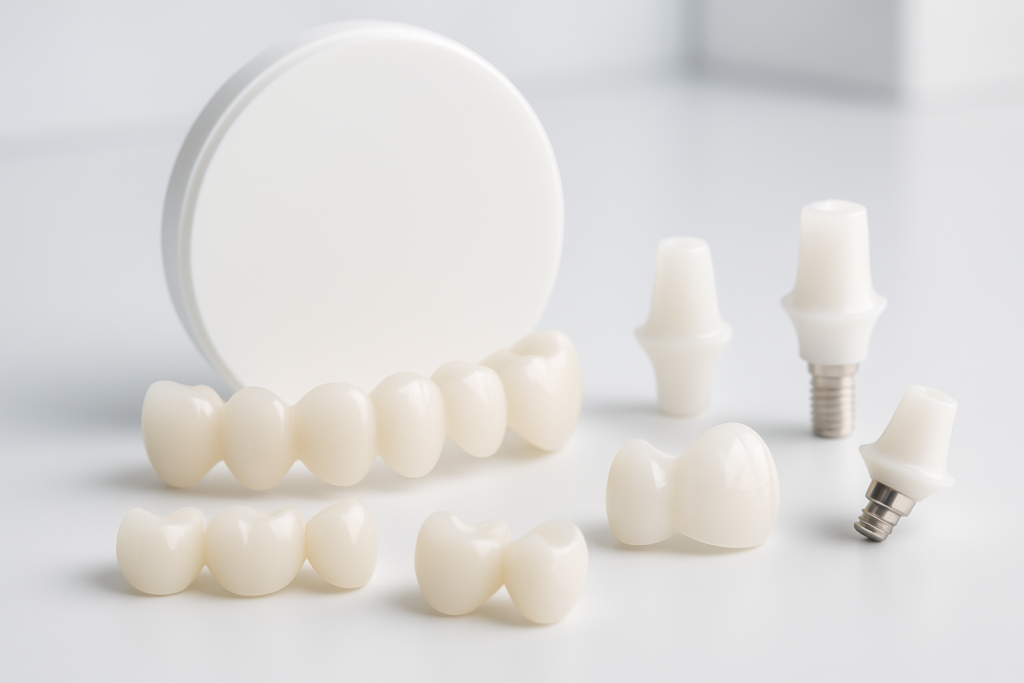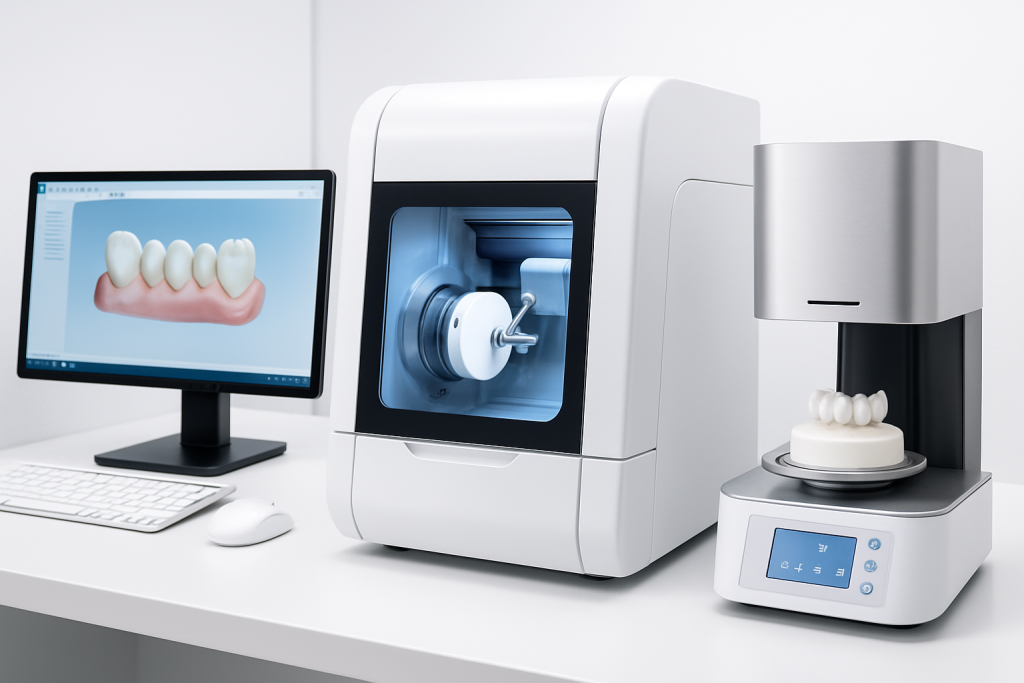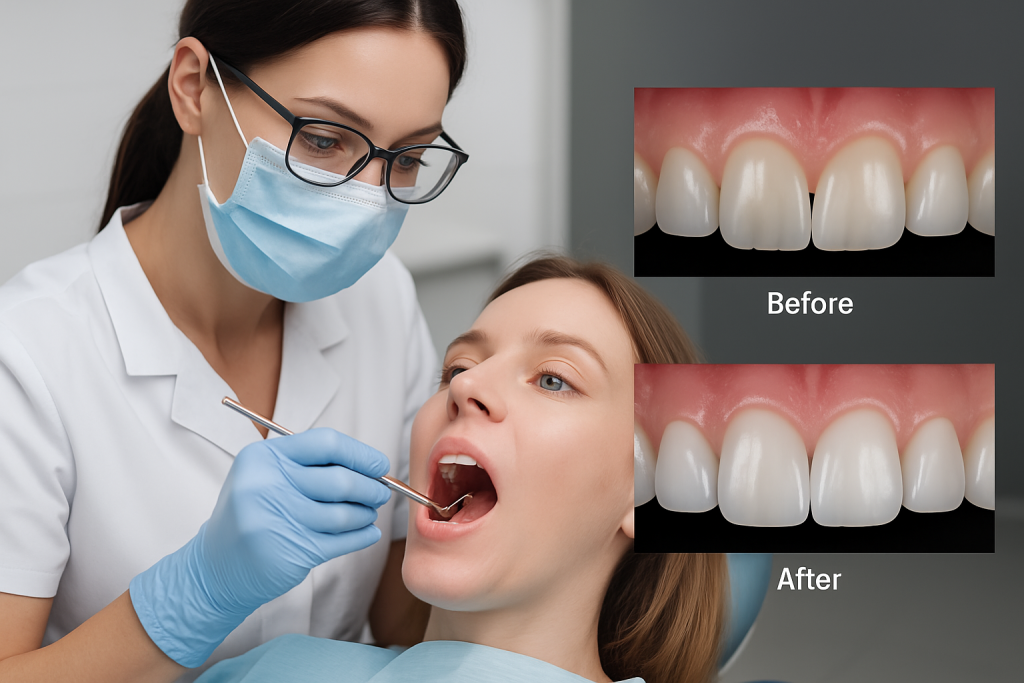Modern dentistry is experiencing a material revolution with advanced zirconia ceramics at the forefront. Dental professionals face increasing patient demands for restorations that combine strength, longevity, and natural aesthetics.
Advanced zirconia ceramics address these challenges by offering superior mechanical properties while maintaining excellent biocompatibility and aesthetic outcomes. Recent innovations in zirconia formulations and processing techniques have dramatically expanded clinical applications, making these materials suitable for everything from single crowns to full-arch reconstructions.
According to clinical studies, modern advanced zirconia ceramic restorations demonstrate 5-year survival rates exceeding 95%, positioning them as reliable alternatives to traditional materials for forward-thinking dental practices.
What Are the Key Properties of Advanced Zirconia Ceramics?
Zirconia has rapidly become a cornerstone material in modern dentistry, but not all zirconia ceramics are created equal. You might be surprised by how significantly the latest generations of advanced zirconia ceramics differ from earlier versions in both physical and aesthetic characteristics.
Advanced zirconia ceramics derive their exceptional properties from a unique crystalline structure that can be modified through the addition of stabilizing oxides. The most common dental zirconia is yttria-stabilized tetragonal zirconia polycrystal (Y-TZP), which exhibits remarkable flexural strength ranging from 600-1200 MPa—significantly higher than other dental ceramics.
The latest advanced zirconia ceramic materials feature improved translucency without sacrificing strength. This advancement comes from modifications in the microstructure and composition, particularly in the concentration of yttria (Y₂O₃) that determines both mechanical and optical properties of advanced zirconia ceramics.
| Zirconia Type | Yttria Content | Flexural Strength | Translucency | Primary Applications in Dental Practice |
|---|---|---|---|---|
| 3Y-TZP | 3 mol% | 900-1200 MPa | Low | Posterior bridges, implant abutments |
| 4Y-TZP | 4 mol% | 750-900 MPa | Medium | Full-contour crowns, anterior bridges |
| 5Y-TZP | 5 mol% | 600-750 MPa | High | Anterior restorations, veneers |
| Multilayer | Variable | 750-1000 MPa | Gradient | Full-contour aesthetic restorations |
Beyond strength, advanced zirconia ceramics offer exceptional wear resistance, with studies showing minimal antagonist wear compared to feldspathic porcelain. This characteristic makes full-contour advanced zirconia ceramic restorations particularly suitable for patients with bruxism or high masticatory forces.
Biocompatibility remains another key advantage of advanced zirconia ceramics in dental practice. These materials show minimal plaque accumulation, low bacterial adhesion, and excellent tissue response. Recent research indicates that advanced zirconia ceramic implants and abutments may promote better soft tissue attachment than titanium alternatives.

How Has Zirconia Manufacturing Technology Advanced?
The evolution of advanced zirconia ceramics in dentistry is inseparable from advancements in manufacturing technology. What you’ll find fascinating is how digital workflows have transformed the production of these advanced zirconia ceramic restorations from labor-intensive processes to precise, efficient systems.
CAD/CAM technology forms the backbone of modern advanced zirconia ceramic fabrication. The latest milling systems can process advanced zirconia ceramics with micron-level precision, creating restorations with exceptional marginal fit.
Studies show that CAD/CAM-produced advanced zirconia ceramic restorations consistently achieve marginal gaps below 50 μm—well within clinical acceptability standards according to research published in the Journal of Prosthetic Dentistry.
Multilayer zirconia blocks represent one of the most significant manufacturing innovations for dental practice. These advanced zirconia ceramic materials feature graduated compositions that transition from highly translucent incisal areas to stronger, more opaque cervical regions.
| Manufacturing Advancement | Key Benefit | Clinical Impact in Dental Practice |
|---|---|---|
| 5-axis milling technology | Complex geometry processing | More conservative preparations |
| Multilayer zirconia blocks | Built-in color gradients | Improved aesthetics without layering |
| Speed sintering protocols | Reduced production time | Same-day restorations possible |
| Surface treatment innovations | Enhanced bonding | Improved clinical longevity |
| Integrated shade matching | Predictable aesthetics | Higher patient satisfaction |
Sintering technology has also evolved significantly. Traditional sintering required 8-12 hours, but advanced furnaces now offer speed sintering protocols that can complete the process in under 90 minutes without compromising material properties.
This advancement enables same-day delivery of advanced zirconia ceramic restorations in many dental practices, improving patient experience and practice efficiency.
Surface treatments have become more sophisticated as well. Newer techniques include selective infiltration etching, laser modification, and plasma treatment—all designed to enhance bonding potential without creating microcracks that could compromise advanced zirconia ceramic restoration strength.

What Clinical Applications Benefit Most from Advanced Zirconia?
The versatility of advanced zirconia ceramics has expanded their clinical applications significantly in dental practice. You’ll notice that today’s advanced zirconia ceramic materials can address almost any restorative challenge, from simple single units to complex full-arch rehabilitations.
Full-contour advanced zirconia ceramic crowns have become the restoration of choice for many posterior applications. Their combination of strength, minimal preparation requirements, and improved aesthetics makes them particularly valuable for molars and premolars where occlusal forces are highest.
Advanced zirconia ceramic bridges now offer reliable alternatives to metal-ceramic restorations. Current evidence supports the use of advanced zirconia ceramics for spans of up to 4 units in posterior regions and up to 6 units in anterior areas when using high-strength formulations.
| Clinical Application | Recommended Zirconia Type | Key Advantages in Dental Practice | Considerations |
|---|---|---|---|
| Posterior crowns | 3Y-TZP | Maximum strength, minimal reduction | Limited translucency |
| Anterior crowns | 4Y/5Y-TZP | High aesthetics, natural appearance | Requires adequate thickness |
| Short-span bridges | 3Y/4Y-TZP | Metal-free alternative, biocompatibility | Connector dimensions critical |
| Implant abutments | 3Y-TZP | Tissue-friendly, aesthetic emergence | Connection design important |
| Full-arch frameworks | 3Y-TZP | Passive fit possible, lightweight | Requires precise digital planning |
Implant dentistry has particularly benefited from advanced zirconia ceramic advancements. Custom advanced zirconia ceramic abutments offer superior soft tissue response and eliminate the grayish appearance sometimes seen with titanium components.
One-piece advanced zirconia ceramic implants are also gaining traction as metal-free alternatives for patients with titanium sensitivities, as documented by the International Academy for Ceramic Implantology.
Minimally invasive applications represent an emerging area for advanced zirconia ceramics in dental practice. Thin occlusal veneers (1.0-1.5mm) made from high-translucency advanced zirconia ceramics can provide conservative solutions for worn dentition, while maintaining excellent fracture resistance compared to glass ceramics.
How Do Advanced Zirconia Ceramics Affect Clinical Outcomes?
The ultimate measure of any dental material is its performance in the oral environment. What matters most is how these advanced zirconia ceramics translate to real-world clinical success and patient satisfaction in dental practice.
Longevity data for modern advanced zirconia ceramic restorations continues to improve. A recent meta-analysis of clinical studies showed 5-year survival rates of 95.8% for single crowns and 94.6% for fixed dental prostheses—comparable to metal-ceramic alternatives.
The primary failure modes differ, however, with advanced zirconia ceramics showing lower rates of material fracture but higher incidence of veneer chipping in layered restorations.
Patient-reported outcomes strongly favor advanced zirconia ceramic restorations. Surveys indicate high satisfaction with aesthetics, comfort, and perceived naturalness.
The metal-free nature of these advanced zirconia ceramic restorations also appeals to the growing segment of patients seeking biocompatible treatment options in modern dental practice.
| Clinical Outcome Measure | Advanced Zirconia Performance | Comparison to Traditional Materials in Dental Practice |
|---|---|---|
| 5-year survival rate (crowns) | 95-98% | Comparable to metal-ceramic |
| Antagonist wear | Minimal with polished surface | Less than feldspathic, more than gold |
| Marginal adaptation | 20-70 μm gap | Similar to precision metal restorations |
| Soft tissue response | Excellent biocompatibility | Superior to base metal alloys |
| Thermal sensitivity | Minimal | Better than metal-ceramic |
Wear characteristics of advanced zirconia ceramics against natural dentition have been a concern, but current evidence suggests that properly polished advanced zirconia ceramic causes less antagonist wear than feldspathic porcelain.
The key factor appears to be the final surface finish, with glazed advanced zirconia ceramics showing higher abrasiveness than polished surfaces.
Radiographic outcomes also favor advanced zirconia ceramic restorations in dental practice. Their radiopacity allows for clear margin evaluation while avoiding the extreme radiopacity of metal that can obscure adjacent structures. This characteristic facilitates better long-term monitoring and caries detection.

What Are the Best Practices for Preparing and Cementing Zirconia Restorations?
Success with advanced zirconia ceramic restorations depends heavily on proper preparation and cementation protocols. You should know that specific techniques differ significantly from those used with traditional materials in dental practice.
Preparation design for advanced zirconia ceramic restorations balances material requirements with tissue conservation. While advanced zirconia ceramics can be fabricated in thinner sections than metal-ceramics, minimum thickness guidelines must be respected to prevent fracture.
Current recommendations suggest 0.8-1.0mm occlusal reduction for posterior crowns and 1.0-1.2mm for anterior restorations when using advanced zirconia ceramics.
Margin design has evolved with improved material properties. While early advanced zirconia ceramic formulations required heavy chamfer margins, modern high-strength formulations can accommodate more conservative designs, including light chamfers of 0.3-0.5mm depth.
| Preparation Element | Recommendation for Advanced Zirconia | Rationale in Dental Practice |
|---|---|---|
| Occlusal reduction | 1.0-1.5mm | Ensures adequate material strength |
| Axial reduction | 0.8-1.2mm | Balances strength and conservation |
| Margin design | Light chamfer or modified shoulder | Facilitates accurate scanning and milling |
| Line angles | Rounded | Prevents stress concentration |
| Taper | 6-8 degrees | Optimizes retention and material thickness |
Surface treatment before cementation critically affects bond strength with advanced zirconia ceramics. Unlike glass ceramics, advanced zirconia ceramics cannot be etched with hydrofluoric acid.
Instead, protocols typically include air abrasion with aluminum oxide particles (30-50μm) at moderate pressure (1-2 bar), followed by application of a zirconia-specific primer containing phosphate monomers (MDP).
Cement selection depends on the clinical situation in dental practice. While full-coverage advanced zirconia ceramic restorations with adequate retention form can be successfully placed with conventional cements (RMGI), partial coverage restorations and those with limited retention benefit from adhesive cementation using dual-cure resin cements with MDP-containing primers.
For detailed clinical protocols on advanced zirconia ceramic preparation and cementation, the American Dental Association’s Center for Evidence-Based Dentistry provides comprehensive guidelines based on current research.
How Are Digital Technologies Enhancing Zirconia Restoration Workflows?
The synergy between advanced zirconia ceramics and digital dentistry has created entirely new workflows. You can see why many dental practices are transitioning to fully digital protocols when you consider the efficiency and predictability gains with advanced zirconia ceramic restorations.
Intraoral scanning has matured to provide accuracy comparable or superior to conventional impressions. The latest scanners capture full-arch data in under two minutes with mean deviations below 50μm.
This technology pairs perfectly with advanced zirconia ceramic restorations, eliminating the dimensional changes associated with traditional impression materials in dental practice.
CAD software specifically optimized for advanced zirconia ceramic design now offers automated features that account for sintering shrinkage, minimum thickness requirements, and connector dimensions for bridges. These intelligent tools help prevent design flaws that could lead to clinical failures.
| Digital Technology | Workflow Impact | Advanced Zirconia-Specific Benefits in Dental Practice |
|---|---|---|
| Intraoral scanning | Eliminates impression distortion | More precise marginal fit |
| Automated design tools | Faster design process | Optimized connector design for bridges |
| Virtual articulation | Dynamic occlusal analysis | Better functional outcomes |
| 3D printing of models | Accurate verification | Precise fit checking before milling |
| Digital shade matching | Objective color selection | Better aesthetic integration |
Digital smile design has become particularly valuable for anterior advanced zirconia ceramic cases. These tools allow visualization of proposed changes before preparation, facilitating patient communication and guiding minimally invasive approaches.
When combined with multilayer advanced zirconia ceramic materials, these techniques can deliver highly aesthetic outcomes with predictable results in dental practice.
Laboratory workflows have been streamlined through automation. Many dental practices now employ robotic systems for model production, restoration design, and even quality control processes. These technologies reduce labor costs while improving consistency—benefits that can make advanced zirconia ceramic restorations more economically accessible.
What Future Innovations Can Dental Professionals Expect in Zirconia Technology?
The evolution of advanced zirconia ceramics continues at a rapid pace in dental practice. You might wonder what developments are on the horizon that could further transform dental practice in the coming years.
Gradient-property advanced zirconia ceramics represent one of the most promising innovations. These materials feature not just color gradients but also graduated mechanical properties—stronger in functional areas and more translucent in aesthetic zones.
Early clinical evaluations show exceptional results that combine the best aspects of different advanced zirconia ceramic types for optimal dental restorations.
Bioactive surface modifications are advancing rapidly in advanced zirconia ceramic development. Researchers are developing advanced zirconia ceramic surfaces with controlled roughness and chemical composition that actively promote tissue integration. These innovations could further enhance the already excellent biocompatibility of advanced zirconia ceramics for implant components.
| Emerging Innovation | Development Stage | Potential Impact in Dental Practice |
|---|---|---|
| Gradient-property zirconia | Early clinical use | Optimized strength and aesthetics |
| Bioactive surface treatments | Research/early clinical | Enhanced tissue integration |
| Antibacterial zirconia | Laboratory testing | Reduced peri-implantitis risk |
| Self-adjusting occlusal surfaces | Concept development | Adaptive wear patterns |
| Direct 3D printing of zirconia | Early prototype | Complex geometries without milling |
Antibacterial properties are being engineered into advanced zirconia ceramic materials through surface modifications and compositional changes. These developments aim to reduce biofilm formation without affecting biocompatibility—a significant advantage for implant components and restorations in high-risk patients.
Manufacturing innovations continue to emerge for advanced zirconia ceramics. While current advanced zirconia ceramic fabrication relies on subtractive milling, additive manufacturing (3D printing) of advanced zirconia ceramics is advancing rapidly. This technology promises to reduce material waste while enabling more complex geometries than currently possible with milling techniques.
Conclusion
Advanced zirconia ceramics have fundamentally transformed modern dental practice by providing solutions that combine exceptional strength, biocompatibility, and aesthetics. From improved material formulations to digital manufacturing workflows, these innovations offer dental professionals powerful tools to meet patient demands for durable, natural-looking restorations.
As research continues and new technologies emerge, advanced zirconia ceramics will likely play an increasingly central role in restorative and implant dentistry. Dental professionals who stay informed about these developments and master the specific techniques required for advanced zirconia ceramic restorations will be well-positioned to provide optimal patient care in an evolving field.
FAQ Section
Q1: How do advanced zirconia ceramics compare to lithium disilicate for anterior restorations?
Advanced zirconia ceramics, particularly 5Y-TZP formulations, now offer translucency approaching that of lithium disilicate while providing 2-3 times greater flexural strength. This makes advanced zirconia ceramics suitable for anterior applications where aesthetics are critical but additional strength is beneficial, such as bridges or restorations for patients with parafunctional habits.
Q2: Can advanced zirconia ceramic restorations be repaired intraorally?
While complete fractures of advanced zirconia ceramic restorations are rare, chipping of veneering porcelain on layered restorations can occur. Minor chips can be repaired using composite resins with specialized bonding systems containing phosphate monomers. However, significant fractures typically require replacement of the entire restoration.
Q3: How does the cost of advanced zirconia ceramic restorations compare to traditional options?
Advanced zirconia ceramic restorations typically have a higher laboratory cost than metal-ceramic alternatives but lower than full-gold restorations. However, when considering the reduced chair time, fewer adjustments, and lower remake rates, the overall cost-effectiveness of advanced zirconia ceramics is competitive. Digital workflows further improve economics by reducing labor costs.
Q4: Are there any contraindications for using advanced zirconia ceramics in dental practice?
Advanced zirconia ceramic restorations are contraindicated in cases with insufficient occlusal clearance (less than 0.6mm) or extremely thin margins where material strength could be compromised. Patients with severe bruxism may require specific high-strength formulations. Additionally, some clinicians prefer alternative materials for patients with opposing natural dentition due to potential wear concerns.
Q5: How should advanced zirconia ceramic restorations be maintained long-term?
Maintenance of advanced zirconia ceramic restorations includes regular professional cleaning with non-abrasive polishing pastes and avoidance of ultrasonic scalers with metal tips. Patients should be instructed to use non-abrasive toothpastes and soft brushes. Night guards are recommended for patients with parafunctional habits to protect both the restorations and opposing dentition.




